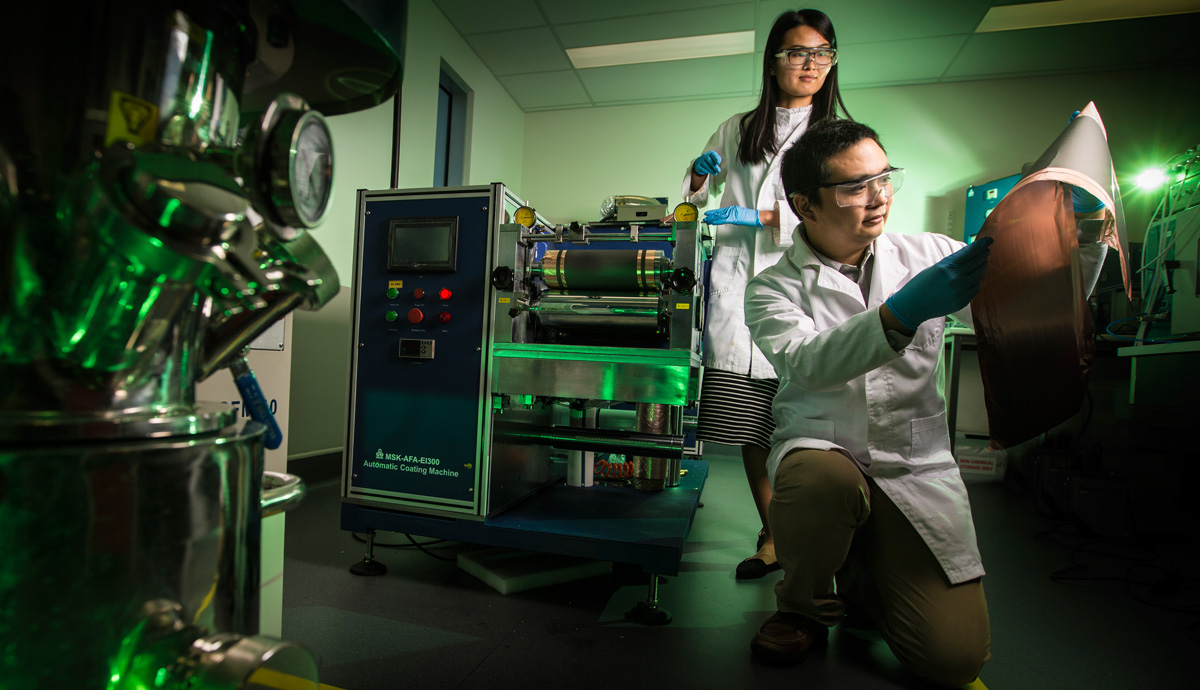December 14, 2015
Sodium battery a ‘game-changer’ in renewable energy storage
Drawing inspiration from the form and function of eggs has helped develop a cheap, high-capacity battery that will help integration of large-scale renewable energy generation into the power grid.
Researchers at UOW’s Institute for Superconducting & Electronic Materials (ISEM) have developed a high-capacity battery based on cheap and plentiful sodium, one of the Earth’s most abundant elements.
Their sodium-ion battery has a capacity close to double that of current sodium-ion technology and comparable to state-of-the-art and commonly used lithium-ion batteries.
A battery capable of packing large amounts of energy into small packages at low cost is a vital piece of the technology needed to integrate large-scale renewable energy generation - such as solar or wind farms - into the energy grid.
Batteries that use sodium are being developed as an attractive alternative to lithium because the materials are cheap, abundant and non-toxic.
The challenge for researchers has been overcoming the low conductivity in sodium-ion as well the large size change the electrode material undergoes during energy cycling.
To overcome these problems the ISEM researchers designed an electrode arrangement - similar to yolk inside an eggshell - using tiny hollow spheres called nanospheres, each roughly 500 times thinner than a human hair.
Experimental testing revealed the ISEM battery design showed remarkable energy density - how much energy the battery can store - of 438 watt-hours per kilogram, exceeding all the sodium-ion batteries and comparable to the state-of-the-art lithium-ion batteries.
“The eggshell architecture allows the yolk, the cathode, to expand within the carbon shell and at the same time increase conductivity because the path the electrons travel between the anode and cathode, or the shell and the yolk, is greatly reduced,” ISEM Director, Professor Shi Xue Dou explained.
“In the past few years there has been massive interest in more efficient and sustainable energy supply, particularly as we have more electronic devices in our homes, workplaces and even transport.”
Typically, most energy networks have little storage capacity and power generators adjust energy production in response to network demand.
Lead researcher Dr Shu Lei Chou said to get the best of our intermittent renewable energy generation would require large-scale energy storage systems, which are currently expensive to deploy.
“Reducing our dependence on fossil fuels cannot be realised without an efficient storage system,” Dr Chou said.
“Sodium-ion batteries now offer the prospect of being the game-changer that allows distributed renewable energy supply to become a reality.” The research team is further developing the technology to pave the way for commercial-scale application of sodium-ion batteries.
The research, conducted at ISEM in Australia in partnership with scientists at Fudan University and Tongji University in China, was published recently in the journal Nature Communications.
Read more about ISEM’s groundbreaking work in battery technology.
